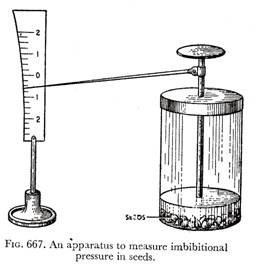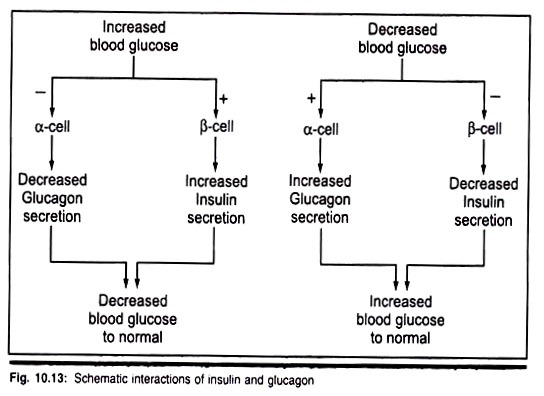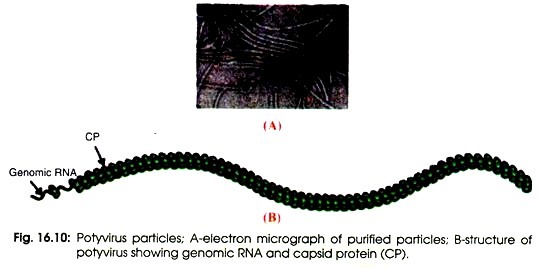List of four main types of reptilia found in the world. The types are: 1. Dinosaur 2. Tortoises and Turtles 3. Lizards 4. Snakes.
Reptilia: Type # 1. Dinosaur:
The word ‘dinosaur’ is a blend of the Greek terms ‘deinos’ (meaning terrible) and saurus (meaning lizard). Richard Owen coined the term dinosaur. The dinosaurs were divided into two main types; one with a bird like pelvis and the other with reptilian pelvis.
i. Reptile-like Dinosaur (Saurischia):
The early dinosaurs of this group were fast, carnivorous, two legged forms. Tyrannosaurus is an example of gigantic carnivorous dinosaurs. It was about 15 mts long. Many saurischia changed to a plant diet and became four legged forms. Brontosaurus, the biggest of them was with an estimated weight of 50 tons.
ii. Bird-like Dinosaurs (Ornithischia):
The dinosaurs of this group were herbivorous. Although, some of them walked upright, the majority were four-legged. Having lost their front teeth, they developed a stout, horny, bird-like beak. Ankylosaurus is an important example of this group. Pteranodon was flying dinosaur.
Reptilia: Type # 2. Tortoises and Turtles:
The body is protected by a shell consisting of a dorsal carapace and ventral plastron. They are toothless. Both tortoises and turtles feed on vegetation but some turtles are flesh eaters. Giant tortoises weigh up to 600 kg. They are considered the longest living animals (more than 180 years).
Differences between Tortoise and Turtle:
i. Terrapins (Freshwater Tortoises):
They are hard-shelled forms which closely resemble land tortoise in appearance. They are herbivorous but omnivorous forms are also found. The majority of the terrapins occur in large rivers like the Ganga. Many are semi terrestrial.
ii. Sphenodon (Tuatara):
It is burrowing carnivorous and nocturnal in habits. It is lizard like and is about 70 cms long. The young tuatara has a rudimentary third eye on the top of the head. It was formerly found throughout New Zealand but now it is restricted to some small neighbouring islands. The “living fossil” is strongly protected under law by the Government of New Zealand.
Reptilia: Type # 3. Lizards:
Some of the important types of lizards are listed below:
i. Heloderma:
There are only two types of poisonous lizards in the world — the gila monster (Heloderma suspectum) and the beaded lizard (Heloderma horridum), both found in parts of the U.S.A and Mexico. In these two types of lizards, the venom glands and “fangs” are in the lower jaw. The venom flows out of four pairs of grooved lower teeth.
ii. Draco— Flying Lizard (Flying Dragon):
It has membranous parachute-like folds of skin, the patagia (Sing, patagium) supported by extended ribs. The patagia are used for gliding from tree to tree. Draco is common in India (Assam, Kerala), Myanmar (Burma) and Malaysia.
iii. Glass Snake:
It is a limbless lizard. It derives its name (glass snake) from its ability to break off its tail when seized. Ophiosaurus gracilis is North Indian glass snake. Barkudia is South Indian glass snake. Auguis fragilus is European glass snake.
iv. Chameleon:
Chameleons have arboreal life. It has long tongue used for catching the prey. Its tail is long and prehensile. Chameleon has the ability to change the colour of its body according to the surrounding.
v. Phrynosoma — Horned Toad:
It is spiny lizard of USA and Mexico. It shows desert adaptation hence also called desert lizard.
vi. Varanus Monitor Lizard (‘Goh’):
Its tongue is long and protrusible. Varanus komodoensis (Komodo dragon) found in eastern islands of Indonesia, is the largest living lizard in the world. It may reach a length of 3 metres and weights 250 kilos.
vii. Hemidactylus— Wall Lizard or Gecko:
It exhibits the phenomenon of autotomy (voluntary casting off a part of the body when the animal is attacked). It breaks off its tail to escape from the enemy. Later on the tail regenerates. It is nocturnal.
Each finger and toe dilates into two rows of ridged lamellae to form adhesive pads on the ventral surface. These pads work on vacuum cup principle and, thus, help animal to move on ceiling and smooth surfaces. The wall lizard checks insects population. It is not poisonous.
viii. Calotes— The Garden Lizard (‘Girgit’):
It is arboreal. When excited, head and neck turn red and trunk becomes pale yellow. Male performs a peculiar courtship dance before the female.
ix. Uromastix The Spiny-Tailed Lizard:
It is called “Sanda” in Hindi. Oil is extracted from its fat bodies. This oil is used for the treatment of muscular pain.
Reptilia: Type # 4. Snakes:
A typical snake is elongated and amid of limbs. The body is covered with scales, which are differentiated into shields and plates. The tympanic membrane and tympanic cavity are absent. Apparently, the eye lids are absent but, if present, are immovable. The nictitating membrane is absent. The tongue is long, bifid and protrusible.
The sternum is absent. The lungs are asymmetrical, the right one being larger. Urinary bladder is absent. There are no vocal cords, therefore, snakes can only hiss through the nostrils. The locomotion is brought about by the lateral body wall muscles through the movement of the ribs.
The sound waves are picked up by the general body surface from the surrounding earth and conveyed to the brain through a small bone, the columella. Both upper and lower jaws bear teeth. In poisonous snakes, a pair of teeth on the upper jaw becomes large and specialised for biting, which are called fangs. Fangs are modified maxillary’ teeth.
There is present a pair of poison glands, each opening at the base of fang of its side by means of a poison duct. Poison glands are modified salivary glands. Generally, poisonous snakes leave two fang marks, rarely one if it is a side-bite.
Non-poisonous snakes usually pro- duce a row of U-shaped teeth marks. Ramphotyphlops braminus (common worm or blind snake) — a non poisonous snake reproduces by parthenogenesis. Only female forms are found in this snake.
i. Naja Naja (Indian Cobra):
Naja is from the Sanskrit word Naaga. It usually lives in rat holes, under stones and thick vegetation, but also comes into human dwellings. Ophiophagus hannah, the King cobra is the only snake in the world that builds a nest. It guards the eggs.
Cobras exhibit cannibalism, viz., they eat their fellow snakes. Cobras are recognised by the presence of hood. The hood is formed by the expansion of the neck. The Third supra-labial scale touches the eye. Cobra is deadly poisonous. However, cobra venom is believed to help in curing cancer.
ii. Bungarus (Krait):
Sandy soil, termite mounds, burrows of small rodents and piles of brick are the best places to find common kraits. Head is slightly wider than neck and bears large shields. Four Infra labial scales are present in which the fourth infra labial scale is the largest. A line of hexagonal scales is found mid dorsally. Kraits are nocturnal and are true cannibals. Their venom is extremely toxic.
iii. Vipera (Viper):
A viper is viper because it is viviparous. The head is triangular, flat and covered with small scales, boreal pits between eyes and nostrils are absent in viper, however, loreal pits are present between eyes and nostrils in pit viper. It has large plates on ventral surface.
iv. Hydro-Phis (Sea Snake):
It is also called Samudra Sanp in Hindi. The tail is laterally compressed and is adapted for swimming in water. Hydro phis is deadly poisonous.
v. Python (Ajgar):
It is a large, huge, massive non-poisonous snake. It may attain the length of 10 metres or more and is thought to be biggest snake of India. It is predaceous and kills the prey by coiling around and crushing and swallowing its prey. Its body is covered with small scales. Vestiges of hind limbs and pelvic girdles are present. Tail is short and prehensile.






